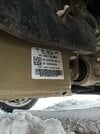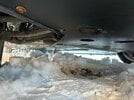Hi guys!
Im located in Norway and have a late 2018 model S75D that «died» this week. The main battery is being replaced on warranty. The car has gone 64000km with not much supercharging, so I still had full charging speed on the old battery.
Now they are telling me that they will install a refurbished 90-pack that will be software limited to 75kw. I will get the option to upgrade to 90kw for around 2-2500USD - will get the exact price later today.
Can you help me with some considerations about this? First of all I have understood that there are ”old” 400V 90-packs and “new” 350V-packs that are better, so I hope it is the new version. For me it would be nice with extra range over the 75-range I am used to, especially during winter. But still I manage well with the 75 in daily use so its not critical. I guess the car will be more easily sold as 90D. But be going for a software restricted pack til 75kw, might that work out so that I can charge the car more often to 100% and still not wear down the pack? If so that that might be the best option for no extra money.
Also - will the supercharging speed and acceleration differ between a sw-restricted pack or a 90-upgrade?
Best regards,
Magne
Im located in Norway and have a late 2018 model S75D that «died» this week. The main battery is being replaced on warranty. The car has gone 64000km with not much supercharging, so I still had full charging speed on the old battery.
Now they are telling me that they will install a refurbished 90-pack that will be software limited to 75kw. I will get the option to upgrade to 90kw for around 2-2500USD - will get the exact price later today.
Can you help me with some considerations about this? First of all I have understood that there are ”old” 400V 90-packs and “new” 350V-packs that are better, so I hope it is the new version. For me it would be nice with extra range over the 75-range I am used to, especially during winter. But still I manage well with the 75 in daily use so its not critical. I guess the car will be more easily sold as 90D. But be going for a software restricted pack til 75kw, might that work out so that I can charge the car more often to 100% and still not wear down the pack? If so that that might be the best option for no extra money.
Also - will the supercharging speed and acceleration differ between a sw-restricted pack or a 90-upgrade?
Best regards,
Magne




